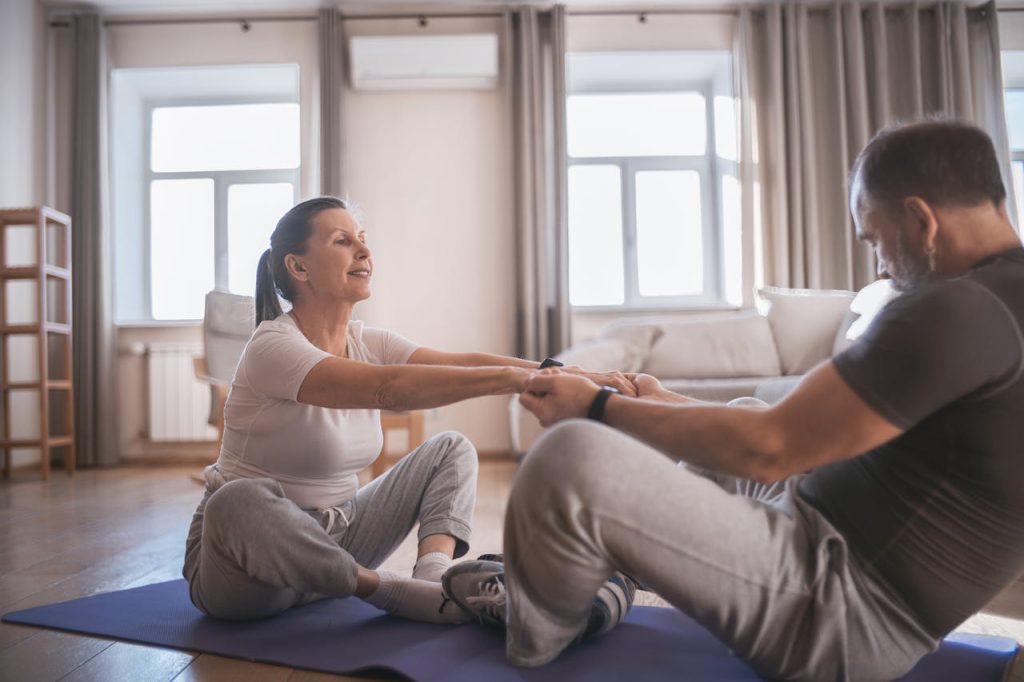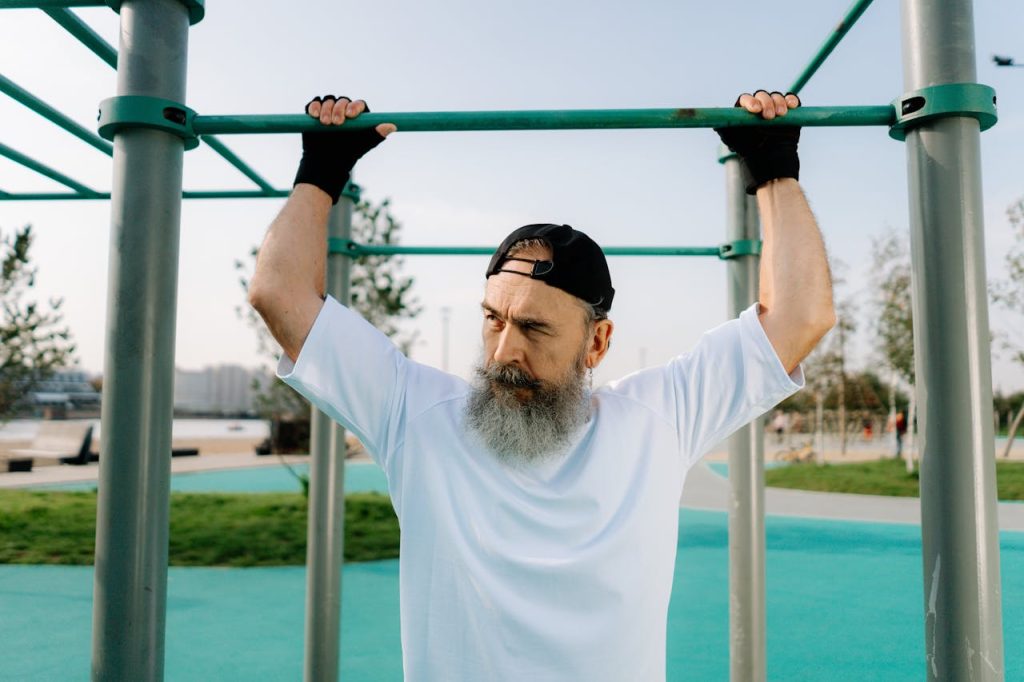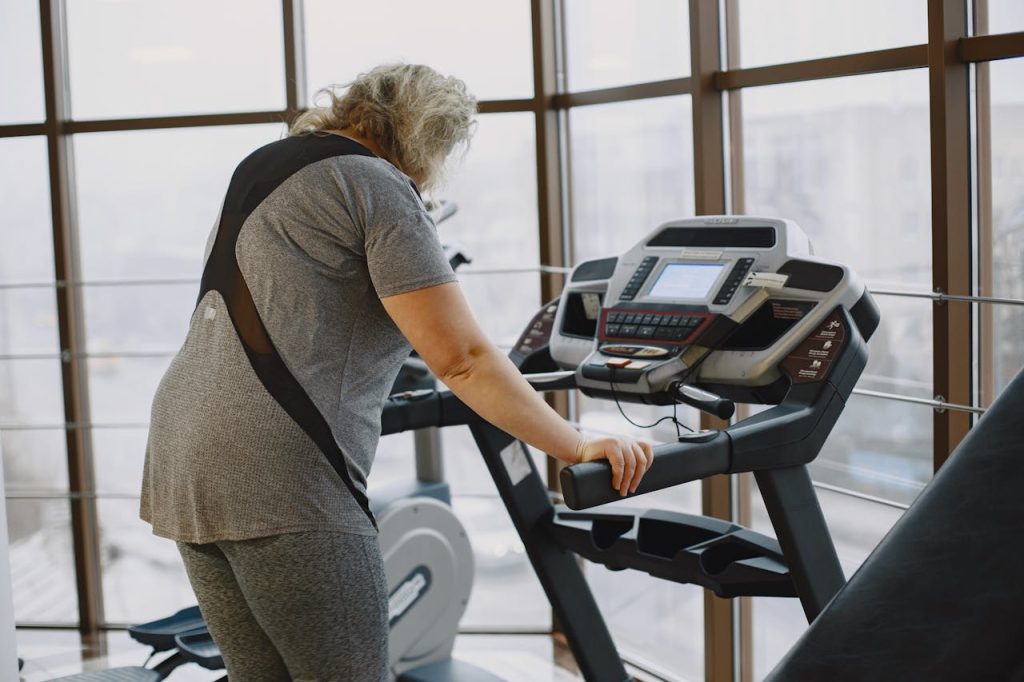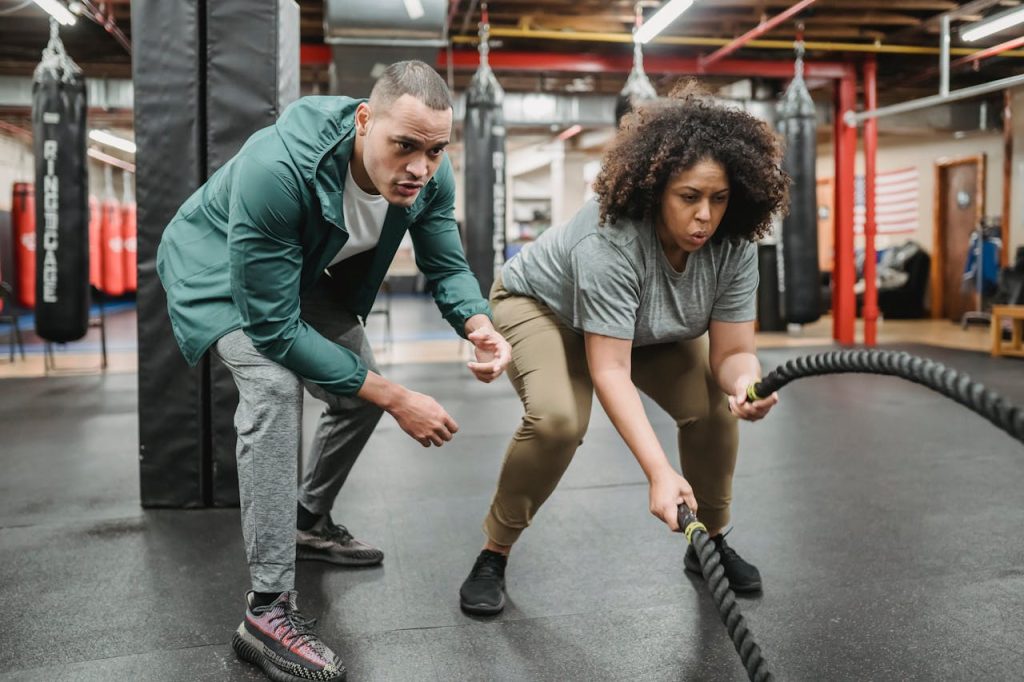Key Takeaways
- Strength training is essential to aging well. Strength training plays a key role in maintaining independence, improving balance, and increasing energy levels. It is the bedrock for preventing and addressing chronic disease. This requires making it a cornerstone of a healthy retirement lifestyle.
- Begin by identifying your fitness goals for retirement. Choose clear, achievable goals that will improve your everyday life and fit into your life. Consistently revisit and refine these goals to stay focused.
- Estimate your current fitness level to develop a personalized strength training routine. Take a basic stock of what you can do and where you can move more easily, establishing safe, achievable goals according to what you can handle comfortably.
- Select appropriate exercises Focus on the major muscle groups and include functional movements. To further spice things up, incorporate different pieces of equipment such as resistance bands, dumbbells, or your own body weight.
- Incorporate stretching and stability exercises into your routine to improve change-of-direction ability and prevent falls. These exercises not only protect against injuries but also enhance your everyday mobility, creating a balanced fitness regimen.
- Fuel your body by following a nutrient-dense diet, including plenty of protein and other vital nutrients. Proper nutrition plays a crucial role in muscle recovery and overall energy levels, making it an essential partner to your strength training routine.

Selecting the ideal strength training routine to achieve your retirement goals begins with understanding your individual needs and abilities. Pick routines to match your lifestyle aspirations.
Whether you’re looking to enhance your mobility, increase muscle mass, or simply support healthy aging, the proper choice will yield powerful outcomes. Strength training provides such an array of options.
Depending on your preferences and physical abilities, you may decide to start with simple bodyweight exercises, resistance bands, or free weights. Just having regular sessions—two times a week is enough—can prevent bone density loss and improve balance.
Moreover, they help keep your joints healthy, which is critical for remaining active in retirement. By aligning your routine with your health objectives, you can create a sustainable workout plan that fits seamlessly into your daily life.
Here’s how to choose and customize one that will best fit your goals.
Why Strength Matters As We Age
Strength training is more than the traditional “lift heavy weights” approach. It keeps you independent, stabilizes your balance, gives you more energy, and helps you age healthily. Each decade beginning at age 30, muscle mass automatically decreases by 3% – 8%.
The decline accelerates after age 60, making strength-building an important, intentional effort needed to preserve mobility and improve your quality of life. Here’s how strength training supports these goals:
Independence Through Strength
Developing strength helps you perform everyday activities, such as carrying groceries or walking up stairs, independently. Training regimens that focus on functional movements, like squats or weight carry exercises, simulate everyday tasks and activities, which helps encourage independence.
Setting achievable objectives, such as increasing resistance over time, will make you feel equipped to continue challenging yourself and living an active and rewarding life.
Enhanced Balance And Stability
More than 95 percent of hip fractures among older adults are caused by falls — danger that can be alleviated nearly 50 percent by strength training. Core-focused exercises such as planks or balance drills promote better stability.
Using a resistance band can introduce safe, adaptable obstacles to further engage one’s core. Tracking specific improvements, like the ability to hold balance poses for a longer period, emphasizes accomplishments and reinforces self-efficacy.
Boost Energy Levels Naturally
Regular strength training can help beat fatigue with overall increased circulation, more efficient muscle action, and even better sleep. Combining strength-building activities with a routine of walking or biking more boosts overall energy and vitality.
An even program that combines cardio and strength makes you feel good and ready to tackle your day.
Disease Prevention And Management
Strength training exercises are crucial for improving metabolic health, making it easier to maintain a healthy weight and lowering the risk of chronic diseases such as diabetes. Tailored exercise programs address individual needs, fostering overall wellness and supporting a healthy lifestyle.
Sharpen Cognitive Function
By increasing the flow of oxygen and nutrients—including glucose—to the brain, strength exercises can boost memory and concentration. Group classes introduce an important element of social engagement, which has been shown to boost mental health.
When we set dual goals for increased physical strength and improved mental clarity, we experience benefits that are holistic in nature.
What Is Strength Training?
Strength training is all about exercises that focus on building your muscle strength and endurance through resistance. This practice is ever so crucial for seniors. It can help them keep their mobility, protect their joints, and lower their chances of developing sarcopenia, or age-related muscle loss.
Strength training plays an important role in helping you maintain and improve your physical independence. Consequently, common tasks, such as walking up steps or lifting groceries in the grocery store, are greatly facilitated.
With so many types of strength training modalities available, there are countless benefits to be gained. Resistance bands offer a low-impact alternative, making them perfect for beginners or individuals rehabilitating from injuries.
With free weights (dumbbells, etc.), you involve a greater range of motion and work on balance as you develop strength. Bodyweight exercises—such as squats and push-ups—require no equipment and can be done anywhere for added flexibility.
Unlike free weights, machines at the gym assist you in keeping the right form. This guidance is particularly helpful if this is your first time trying out strength training.
Consistency is one of the biggest cornerstones of any effective strength training program. Committing to two or three sessions per week ensures steady progress and helps build a routine that fits into your lifestyle.
With regular practice, you’ll develop more powerful muscles. This leads to better posture and decreases fall risk, making you more physically resilient in the long run.
Beyond benefits we can see physically, strength training has an overwhelmingly positive impact on our general health and wellness. It maintains healthy bone density and enhances metabolic health.
Second, improving mental health contributes to a more active and engaged lifestyle in retirement.
Evaluate Your Present Level Of Fitness
Understanding your starting point is essential for building a strength training routine that aligns with your retirement goals. To create a plan that works for you, it’s important to evaluate your baseline fitness level. This means taking stock of your current strength, flexibility, and overall physical capabilities.
By doing so, you can avoid overexertion and ensure that your routine is both safe and effective. Simple assessments can help you gauge where you stand physically. For example, test your upper body strength by performing push-ups, either on the floor or against a wall, and count how many you can do with proper form.
For lower body strength, try a chair stand test, where you measure how many times you can rise from a seated position in 30 seconds. Flexibility can be checked with a sit-and-reach test—see how far you can comfortably extend your hands toward your toes while sitting. These tests give you a clear picture of your strengths and areas that may need improvement.
After you’ve received your results, determine which aspects would benefit most from dedicated time and energy. If time is brief, build stretching or yoga into your routine. If strength is an issue, start with easy things—say resistance band exercises or some light dumbbell exercises.
Establishing realistic goals from these insights will help make your training program sustainable and customized to you. For example, making a goal to do 15 push-ups in a month is specific, measurable, and an attainable challenge.
How To Choose The Perfect Strength Training Routine For Your Retirement Goals
Selecting an effective strength training routine for your retirement involves aligning your fitness regimen with personal goals, health conditions, and an active lifestyle. A well-designed strength training routine not only enhances your overall health but also significantly improves your quality of life.
1. Define Your Retirement Fitness Goals
Begin by finding specific, achievable fitness goals. For example, if being able to get around and taking longer trips is the goal, target exercises that build endurance and joint integrity.
Turn bigger, long-term goals into smaller daily or weekly tasks, such as doing one more push-up per week. By systematically revisiting your goals, you can track your progress and make sure they stay relevant to your evolving needs.
2. Consider Pre-existing Conditions
People’s health conditions play a large role in the types of exercise they choose. If you have arthritis in your knees, stick to low-impact choices like swimming or using resistance bands.
Talking to healthcare professionals can offer personalized guidance that keeps the routine both safe and effective.
3. Select Suitable Exercises
Include functional exercises that work all major muscle groups, such as squats or dumbbell chest presses, to develop overall strength. Functional exercises like step-ups imitate the actions we take every day, helping foster independence.
Trying out various types of equipment mixes it up and allows you to discover which activity you like best.
4. Prioritize Flexibility And Balance
Incorporating flexibility exercises and balance activities, such as yoga or tai chi, and single-leg standing or toe walking, improves balance and lowers chances of falls and other injuries.
Set aside practice sessions to measure progress in these aspects of the game as they advance through their career.
5. Plan A Weekly Workout Schedule
With a regular workout routine that includes strength training exercises, stretching, and aerobic exercise, you’re more likely to stick with it. For instance, plan to incorporate body strength training on different days alongside days focused on flexibility for a rounded fitness routine.
6. Nourish Your Body For Strength
Prevent muscle loss by eating protein-rich foods, such as lean meats and legumes, to boost your gains. Balanced meals before and after regular exercise optimize energy during workouts and recovery afterward.
7. Emphasize Rest And Recovery
Incorporating rest days or active recovery days, such as a day of walking, into your regular exercise regimen is essential. Adequate quality sleep aids in muscle repair, promoting overall health benefits.
8. Monitor Progress And Adjust
Log all of your workouts so you can see where you need to grow. Be sure to celebrate your accomplishments, such as lifting heavier weights, to stay motivated.
Feedback from trainers can provide helpful insights for further refinement.
9. Safely Increase Intensity
Progressive overload, such as increasing the weight with small increments, enhances your body strength training while minimizing the risk of injury. Focus on maintaining proper form and comfort for a successful exercise regimen.
10. Choose Your Strength Training Modality
Try it out using free weights, machines, or bodyweight resistance to find out what works best for your interests in your new exercise program. Whether at home or in a small gym, availability and access make it doable and sustainable for an active lifestyle.

Best Strength Exercises For Retirees
Learning which strength training exercises to do as a retiree can make all the difference in keeping you active, mobile, and independent. A comprehensive routine ought to include safe and effective strength-building movements. All these exercises work several muscle groups at once while increasing your functional strength—your strength for everyday tasks.
Here are the main types of exercises to strengthen your routines and achieve these goals.
Bodyweight Workouts
Bodyweight exercises are a key component of a rounded fitness routine, as they are convenient and easy to do, requiring little to no equipment. This makes them accessible and adaptable for everyone, including seniors looking to maintain their fitness levels. Movements such as squats, push-ups, and lunges work multiple muscle groups at once while improving balance and coordination, essential for an active lifestyle.
For instance, a squat exercise builds strength in your legs and core, which assists with everyday activities like getting up from a seated position. Concentrating on execution is crucial for a successful exercise regimen. To perform a push-up, ensure your body remains straight, lowering yourself by bending the elbows to a right angle of 90 degrees.
To keep your workout routine challenging, consider reducing the range of motion or incorporating wall exercises to suit your ability level. This adaptability is particularly beneficial for seniors, allowing them to engage in physical activity that supports their overall health and well-being.
Resistance Band Workouts
Resistance bands provide a compact and adaptable solution for effective training. Move with purpose. Exercises such as bicep curls, lateral leg raises, and seated rows will work major muscle groups.
Change the band’s resistance by making it shorter or longer, allowing you to personalize your challenge. Their lightweight and portable design makes them ideally suited for both home use and travel.
A seated row with a resistance band, for instance, strengthens your back and improves posture, which is vital for daily tasks.
Dumbbell Training
Working with light, dumbbells not only builds your strength, it builds your balance. Begin with 2-5 lbs and get familiar with the action of shoulder presses, bicep curls, and deadlifts.
These strength exercises are designed to help retirees establish both upper and lower body strength and maximize their functional movement abilities. Gradual increases in weight are key to avoiding injury and promoting consistent advancement.
Always focus on form, like maintaining a straight back while deadlifting, for the greatest safety benefit.
Chair-Based Exercises
For anyone having difficulty building strength or balance, chair-based exercises provide a comfortable but effective foundation. Activities such as seated leg lifts and arm raises are great options for older adults with limited mobility.
For instance, seated leg lifts build your thigh muscles and help you walk better. Adjust these exercises to fit your individual needs, making sure that they continue to feel comfortable and safe for you.
Exercises To Approach With Caution
As you approach strength training to help support physical activity later in life and gain financial freedom in retirement, knowing which exercises to approach with caution is key. Being active lowers the risk of falling by 23%. Some movements can put seniors who are already managing preexisting conditions or joint pain at unnecessary risk.
A little exercise caution goes a long way in making sure your fitness routine is as safe as it is effective.
High-Impact Activities
High-impact exercises such as long-distance running and high-intensity interval training can quickly put too much stress on aging joints and bones. This repeated motion can increase the chances of injury, including stress fractures or joint inflammation.
Instead, low-impact options like swimming or biking offer their own cardiovascular and endurance-building advantages without the added strain. When it comes to strength building, resistance bands and bodyweight exercises provide much safer avenues.
Monitoring how your body responds to any activity is critical. Pay attention to signs of discomfort and adjust your routine accordingly to avoid setbacks.
Exercises Exacerbating Joint Pain
Movements such as weighted squats, leg presses, and upright rows can make joint pain worse. This is particularly true for the knees, shoulders, and back. Avoiding or changing these exercises can go a long way toward preserving your joints.
For example, choose seated leg extensions or wall sits to be easier on the knees. Working with a physical therapist can give you personalized advice, helping you establish a routine that not only manages pain but enhances your mobility.
Movements Requiring Extreme Flexibility
Exercises such as power cleans or difficult yoga positions take a high degree of flexibility and body awareness. This extremely high demand comes with a greater risk of injury.
Slow stretching habits, like seated forward bends or standing hamstring stretches, go a much safer route by gradually increasing flexibility. Focusing on strength-building options, such as resistance training, helps you meet fitness objectives while avoiding going past your breaking point.
Integrating Balance And Stability Exercises
When designing a fitness routine for retirement aspirations, don’t forget to integrate balance and stability exercises. These exercises are incredibly important for maintaining mobility and preventing falls. They specifically target the muscles needed and help improve your balance and agility.
As you get older, incorporating regular exercise into your daily routine allows you to stay active and independent while keeping you safe from falls and injury. When the priority is on movements that challenge your balance, you’ll notice significant improvements in your stability.
Basic and functional exercises, such as single-leg stands, are an excellent starting point. Single leg stance, stand on one leg while using a chair or countertop for balance. Then progressively decrease your dependency on that support to create more strength in your ankle and core stabilizers.
Dynamic movements, such as transitioning from a single-leg stance to a gentle forward or sideways motion, engage your stabilizing muscles. This immersive experience offers immediate functional benefits to your everyday activities.
Adding props such as stability balls or balance boards can mix up the routine and intensity. For instance, performing seated exercises on a stability ball engages your core muscles to maintain posture.
Using a balance board improves proprioception, or your body’s awareness of its position in space. Those are some quite accessible props you can get easy access to. They can be modified to your ability level, so they are great for beginners as well as more advanced folks!
Measuring your balance regularly is an important step in monitoring progress and discovering which aspects of balance you need to improve.
Objective measures, like timing how long you can hold an unassisted single-leg stand, provide clear and quantifiable results. As your balance level increases, you will begin to feel more assured and comfortable in your movements, enhancing your overall health.
Leverage Technology For Strength Training
As you navigate your retirement fitness goals, integrating technology into your regular exercise regimen can provide structure, motivation, and measurable progress. From wearable devices to virtual platforms, these tools can enhance your strength training routine and fit your active lifestyle.
Fitness Trackers And Wearable Devices
Fitness technology makes it easier than ever to track your activity levels and intensity. Wearable devices, including fitness trackers and smartwatches, provide a wealth of metrics beyond steps taken to track your activity levels, including heart rate, calories burned, and more.
For example, if you were to set a goal of 10,000 steps per week or track your weekly strength training sessions, this helps you stay on track. These devices are an incredible source of data-driven insights.
For one, they illuminate trends, like when your progress plateaus or you start to move less. Once shared with your friends, family, or team, you can compete through synced apps creating a supportive atmosphere where specific encouragement is generated by competing interests.
Virtual Coaching And Apps
Further, virtual coaching platforms allow you to connect with professional fitness guidance from the comforts of your own home. Tools such as MyFitnessPal or Fitbod provide customizable workouts specific to your fitness level so you know exactly what to do.
Most have instructional videos to ensure you have the right form and lower your risk of injury. By using online classes or live-streamed sessions, you keep engaged and accountable with built-in trackers, reminders, and progress monitoring.
Virtual connections with U.S.-based, certified trainers ensure tailored feedback, keeping you on track and adapting your routine as you improve.
Online Communities And Support
Online forums or social media groups dedicated to senior fitness mutually reinforce the image of an active aging community and foster a sense of belonging. Sharing the journey—tips, challenges, and milestones—with other tech-friendly folks creates a positive, motivating network.
Some communities run group challenges, like a month-long strength training challenge, to help get everyone involved and build a sense of community. This group motivation can be a game changer in fostering long-term adherence.
Home Gym Vs. Local Gym
When deciding between a home gym and a local gym, it’s important to weigh the benefits each offers while keeping your senior lifestyle fitness goals in mind.
Convenience
A home gym offers maximum convenience since you can work out on your ochedule without commuting. This kind of flexibility is particularly attractive to retirees who wish to stay active with their exercise routine but are not bound by time limitations. Over the course of that membership, outfitting a home gym typically ends up costing the equivalent of three years of gym membership payments.
This out-of-pocket expense quickly pays for itself over time. Plus, with proper care, equipment can last you a lifetime—no monthly membership dues.
Local Gym Benefits
As you might guess, local gyms have plenty of benefits—especially for those who are just getting started in fitness. Their variety of equipment and classes is unlike any other facility. Their expert fitness coaches will set you up with a strong foundation and keep you focused.
Retirees looking for a socially active status quo will experience an immediately inclusive atmosphere at local gyms. These environments provide health-promoting social connections. This social element can be an important ingredient to staying committed to long-term fitness.
Making The Right Choice
With more than 73% of Americans considered clinically overweight, home fitness is a great choice to make physical health a priority now, more than ever. A home gym suits those that place a premium on privacy and convenience.
A local gym is better suited to more organized people who flourish within more structured settings. Pick whatever makes more sense based on your fitness goals, preferences, and budget. This is going to make strength training more fun while keeping your routine sustainable in the long term.

Final Remarks
Strength training can help you age better and healthier. It helps build muscle, maintain bone density, and reduce fall risk by improving balance. Ideally, your strength training routine will complement your retirement goals, current fitness level, and personal lifestyle. Select a home gym or find one in your community, the choice is up to you. Be regular, and listen to the needs of your body! Target and avoid exercises that feel uncomfortable or painful.
Proper nutrition, coupled with balance exercise, can enhance your outcomes. As with many things, technology plays a big part in making it easier to track your progress and stay motivated. Retirement provides a new opportunity to spend time working on your body. Begin with appropriate weights and increase them as you get stronger.
Get started on your path to retirement fitness today. Your body will thank you, and your future self will thank you for it.
Frequently Asked Questions
1. Why Is Strength Training Important As We Age?
Strength training exercises assist healthy aging by preserving lean muscle, enhancing balance and coordination, and lowering the risk of falls. This exercise regimen helps prevent osteoporosis, improves the ease of performing daily activities, and plays an important role in a long, healthy lifestyle during retirement.
2. What Is The Best Way To Start Strength Training For Retirees?
Begin with resistance that’s light enough to maintain good form and technique. To enhance your overall health, try to train with a trainer to help you develop a safe and effective exercise regimen that works for your current fitness levels.
3. How Can I Assess My Current Fitness Level Before Starting?
Evaluate your proficiency with simple exercises such as body squats, pushing your weight, or climbing stairs as part of a rounded fitness routine. Speak with a physician or certified fitness professional for more personalized advice if necessary.
4. Which Strength Exercises Are Best For Retirees?
Bodyweight squats, seated rows, wall pushups, and step-ups can all help you build strength in a safe way, contributing to a rounded fitness routine that addresses large muscle groups while reducing stress on the joints.
5. Are There Exercises Retirees Should Avoid?
Avoid high-impact exercises like heavy deadlifts or jumping exercises, especially if you have joint issues. Prioritize safety and listen to your body when starting a new exercise program, ensuring it aligns with your fitness levels and supports a healthy lifestyle.
Start Your Journey To Lifelong Strength And Independence At Fitness Ellipsis!
Ready to make your retirement years more vibrant, active, and enjoyable? At Fitness Ellipsis, we believe building and maintaining muscle is key—not just for looking and feeling your best but for preserving your independence, confidence, and overall quality of life. Our expert team specializes in crafting personalized strength-training programs tailored for retirees, ensuring every workout is both safe and deeply rewarding.
Whether you’re dipping your toes into resistance exercises for the first time or you’re already a fitness fan, our supportive and motivating approach will help you stay driven. From gentle resistance moves and core-building routines to focused muscle-strengthening sessions, each step enhances your power, stability, and freedom to keep doing the things you love—on your terms. So, why wait to reclaim your vigor and self-assurance? Join the Fitness Ellipsis community today, and let us guide you toward a stronger, healthier, and more fulfilling retirement. Reach out to Fitness Ellipsis now to learn more and take your first step toward a future of unstoppable vitality and independence. Your journey to lifelong strength starts right here!




